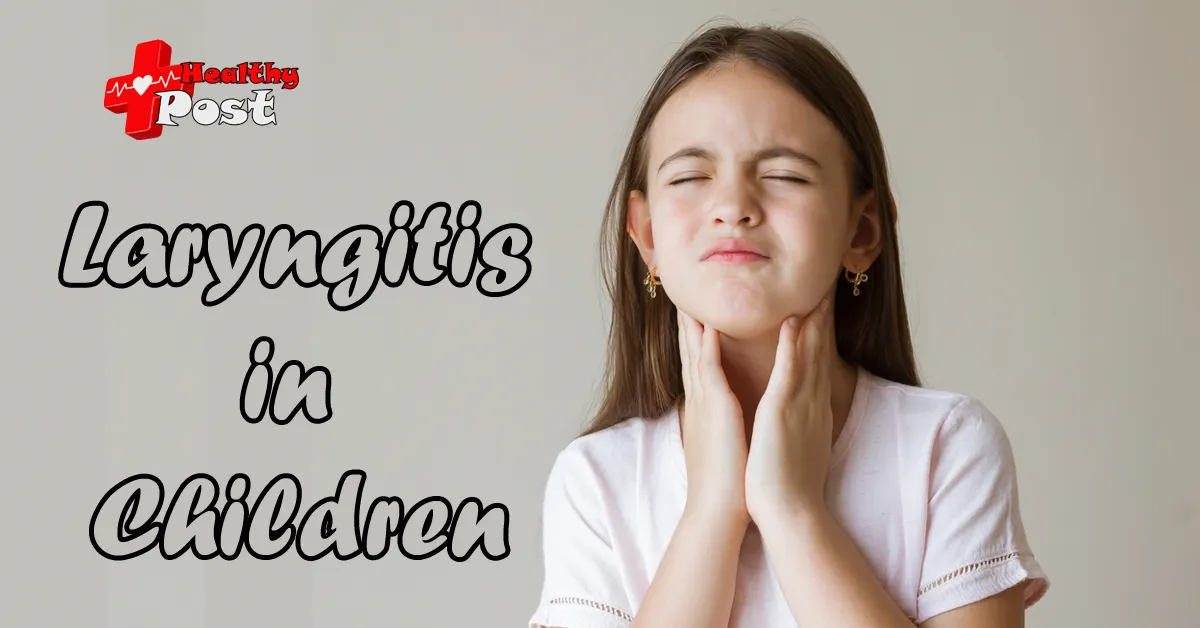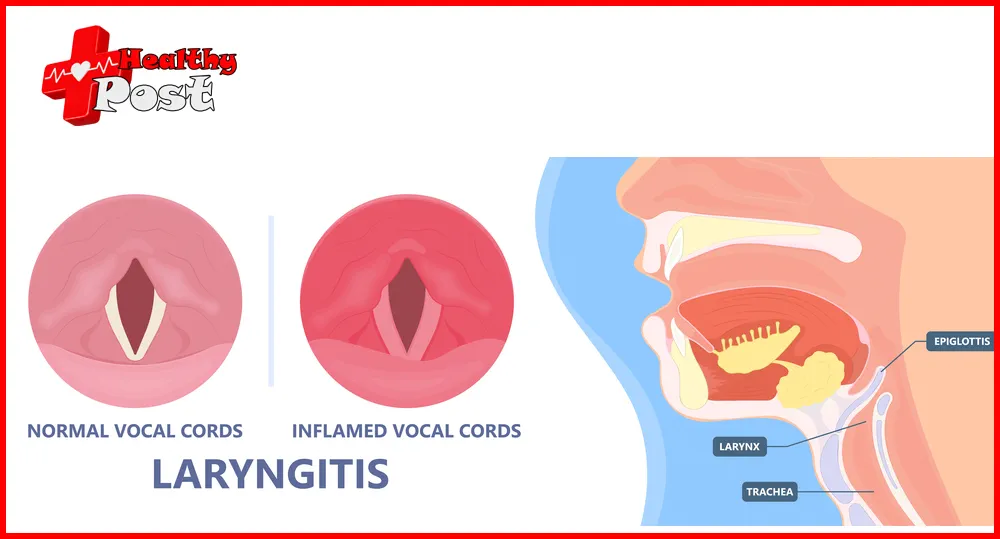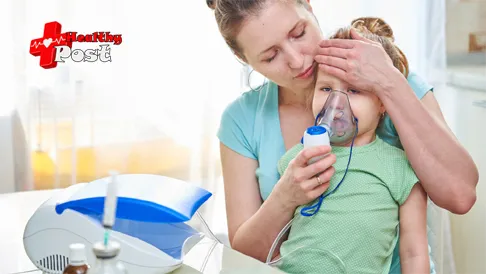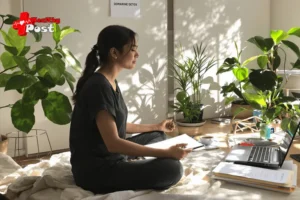
Laryngitis in Children: cause, Diagnostics and Treatment
ARVI can occur in various forms. Laryngitis is one of the variants of the course of a respiratory infection. It is accompanied by damage to the larynx, voice changes, pain, and sometimes breathing problems. How to recognize the symptoms of laryngitis in children, what treatment methods are effective, and what is strictly contraindicated and can worsen the condition, what role psychosomatics plays in this – we will tell you about this in the article.
Causes of occurrence
The tendency to laryngitis in children is associated with the structural features of the respiratory system. These features include looseness of the mucous membrane of the respiratory tract, cartilage, and cellulose; small diameter of the cartilaginous skeleton; abundance of lymphoid tissue; excessive excitability of the muscles that close the glottis1. Because of this, there is a high probability of edema, which can sometimes increase rapidly.
Laryngitis is an inflammation of the larynx, upper respiratory tract and vocal cords. It can be viral (causative agents are rhinoviruses, parainfluenza viruses, influenza, herpes, PC viruses, adenoviruses), bacterial (Haemophilus influenzae, staphylococci and pneumococci, beta-hemolytic streptococcus group A), fungal or allergic in nature (allergy to paint fumes, household chemicals, house dust, medications).
Provoking factors also play a role:
- hypothermia:
- passive smoking, polluted air;
- concomitant diseases of the throat, nasopharynx, tonsils, bronchi, lungs – pharyngitis, adenoiditis, rhinitis, tonsillitis, tracheitis;
- overstraining of vocal cords when shouting or singing professionally;
- cold season – in autumn and winter there is an increase in the incidence of diseases;
- reduced immunity.
There is a theory about the role of psychosomatics in the development of throat diseases. According to the theory, people who “hide” their emotions, both positive and negative, are susceptible to the disease. There is no medical scientific evidence to support this, but it is undeniable that stress increases the risk of any disease, including laryngitis.
Types of laryngitis in children
Laryngitis in children can be acute (ICD-10 code – J04.0) or chronic (J37). The first variant most often develops against the background of ARVI, the second is a consequence of improper treatment, exposure to unfavorable factors and occurs in older children and adolescents.
There are several clinical variants2 of laryngitis in children.
- Catarrhal – as a result of exposure to irritants, hypothermia, occurs with a sore throat, cough, hoarse voice;
- Hydropic;
- Hypertrophic with the appearance of nodules on the ligaments;
- Phlegmonous with the development of a purulent process.
Depending on the cause, the following forms are distinguished: inflammatory, against the background of infectious diseases, allergic with swelling of the mucous membrane, due to trauma or extralaryngeal processes.
Laryngitis in children is rarely found in one anatomical area. As a rule, it occurs together with tracheitis and bronchitis.
A common course of the disease is stenosing laryngitis in children (synonyms: acute obstructive laryngitis3, subglottic, false croup4) – an inflammatory process of the larynx and tissues of the subglottic space with spasm.
Symptoms of laryngitis in children

The clinical picture and severity of symptoms of laryngitis in children depend on the pathogen, the state of the body, and the age of the child.
Acute laryngitis is preceded by signs of ARVI: cough, runny nose, fever, weakness. After about 2-3 days, the voice becomes rough. Complete loss of voice is possible – aphonia. The child is capricious. If you listen to breathing, you can notice that the inhalation becomes longer than the exhalation.
Let’s look at the signs of stenosing laryngitis. Most often, children from six months to three years old suffer from it, but children under six years old are at risk. In this case, there is a spasm of the glottis and the lumen of the larynx narrows, making breathing difficult.
At stage I, the child develops a dry cough, which periodically becomes barking. The voice changes. When crying or restless, an attack of noisy breathing occurs.
Stage II is characterized by increased symptoms of laryngitis in children. Noisy wheezing does not go away even at rest, shortness of breath occurs. In time with breathing, the wings of the nose swell, the jugular fossa, intercostal spaces, and epigastrium are drawn in. The child is restless and sleeps poorly. If it is an infant, then it refuses to breastfeed. The skin is pale. During attacks of suffocation, which usually occur at night or in the early morning hours, cyanosis appears around the mouth.
Stage III
At stage III of obstructive laryngitis the condition is severe. The child suffocates, becomes lethargic, inhibited. The lack of oxygen in the blood and tissues increases. The voice may disappear completely. The nature of the cough changes: it becomes quiet. Breathing is uneven, shallow.
Stage IV is an extremely severe condition with the development of coma and convulsions. Breathing is shallow, rapid, and periodically disappears. Heart contractions are rare.
As you can see, swelling of the larynx can lead to complete blockage of the airways. This is a life-threatening condition that requires urgent resuscitation and medical care. Deterioration can occur within a few hours. Therefore, at the first symptoms of laryngitis in children, you should contact a pediatrician and begin proper treatment.
Diagnostics
Laryngitis in children is diagnosed based on complaints and existing symptoms. The pediatrician interviews the parents, finds out when the cough appeared, whether the voice has changed, examines the throat, listens to the lungs, and visually assesses the child’s condition.
Virological and bacteriological examination of the smear helps to determine the cause of inflammation. And clinical blood and urine tests are performed to assess the general condition of the body.
To clarify the diagnosis and exclude other diseases of the throat and larynx, the ENT doctor performs a laryngoscopy: examination of the mucous membrane using endoscopic equipment.
What pathologies can have symptoms similar to laryngitis in children?
- A peritonsillar abscess develops in children aged approximately 6 months to 3 years. It manifests itself as a sore throat, high fever, nasal voice, speech changes (like a “potato in the mouth”), and displacement of the tonsils beyond the midline;
- Retropharyngeal (retropharyngeal) abscess is diagnosed more often at the age of 2 years and up to 4-5 years. It is accompanied by swelling of the neck, forced position of the head;
- Aspiration of foreign bodies in most cases occurs before the age of 3. When questioned, the mother may say that the cough appeared during feeding, when playing with small objects, that is, there is a connection with the probable entry of pieces of food, toys into the respiratory tract and the appearance of symptoms;
- Epiglottitis develops between the ages of 3 and 12. It is a severe bacterial infection and is accompanied by inflammation of the epiglottis, surrounding tissues, and difficulty breathing.
Treatment of laryngitis in children

In case of non-obstructive laryngitis in children and obstructive laryngitis of the first degree, the child is treated at home under the supervision of a pediatrician. In case of stenosis of the second degree, age up to 1 year, ineffectiveness of the therapy and when it is not possible to follow the doctor’s recommendations, the child is hospitalized.
What can parents do on their own to treat laryngitis in children?
- Emotional calm is important. Do not panic and do not show your excitement to the baby. Talk and act calmly, measuredly;
- There should be fresh, cool air in the room. Ventilate the room, turn on the humidifier;
- The optimal position is sitting. Lying down increases the swelling. If your child is small and does not sit, place pillows under the upper part of the body so that he is semi-recumbent or pick him up more often;
- Drink plenty of fluids: This means drinking warm water. Give your child water often, even at night if he wakes up.
How to treat laryngitis in children and what medications can be used?
The main method of treating obstructive laryngitis of viral etiology is inhalation with glucocorticosteroids. For this, you should have a nebulizer at home – this is a device that sprays the drug, and the child inhales it through a mask. Glucocorticosteroid (budesonide) eliminates inflammation and swelling within 15-30 minutes – after some time, the symptoms of laryngitis with stenosis in children are relieved.
If the condition does not improve after inhalation therapy, glucocorticosteroid injections come to the rescue. The dosage is calculated by the doctor.
Symptomatic treatment of laryngitis in children includes the use of antipyretics – paracetamol (15 mg/kg, no more than 4 times a day, the interval between doses is at least 4 hours), ibuprofen (10 mg/kg, 3-4 times a day).
Antibiotics are needed only if there are signs of a bacterial infection. High temperature for 3 days or more, weakness, green nasal discharge are not an indication for antibiotic treatment. They are also not prescribed to prevent bacterial infection. If the pediatrician decides that antibacterial drugs are needed in your case, use them strictly according to the prescribed regimen: do not reduce or interrupt therapy. It is not necessary to give injections – suspensions and tablets are as effective as injection forms.
According to clinical guidelines6, antihistamines are need to treat laryngitis in children only in the case of allergic predisposition: if the child has had allergic reactions or urticaria in the past.
Mucolytics and bronchodilators are use for laryngitis in children if the inflammatory process has spread to the lower respiratory tract.
Treatment of laryngitis in children with folk remedies
To treat laryngitis in children, many parents use folk remedies at home, considering them safer than traditional methods. But these methods are not include in any clinical recommendations.
Here we also need to differentiate which folk remedies are meant. Of course, if you gargle with a soda solution or warm water, there will be no harm. On the contrary, water moisturizes the mucous membranes, prevents them from drying out and becoming irritated. But you can’t gargle with an iodine solution, herbal decoctions, or alcohol tinctures: you can get a burn or an allergic reaction. You also shouldn’t do inhalations with eucalyptus or mineral water: in response to inhaling the vapors, the baby may start to choke.
Diet
Treatment of laryngitis in children includes diet. It is assume that food should not irritate the mucous membrane, while providing the body with everything it needs.
During illness it is recommend:
- Avoid hot and cold dishes, salty and fatty foods;
- The consistency of the food is liquid or crushed (puree, soups, liquid porridges);
- Eliminate acidic fruits and juices made from them.
Disease prevention
To prevent laryngitis in children, it is necessary to carry out prevention of acute respiratory viral infections and follow the following recommendations:
- Get vaccinate against influenza5 annually and vaccinate your child according to the national calendar;
- Avoid hypothermia, dress your baby according to the weather;
- Lead an active lifestyle;
- Eat a varied diet, give fresh vegetables and fruits daily;
- Treat diseases of the oral cavity, respiratory tract, and ENT organs promptly;
- Monitor the microclimate in your home, ventilate the room more often and maintain optimal humidity;
- Avoid crowded places during epidemics;
- Give vitamin supplements if necessary.

